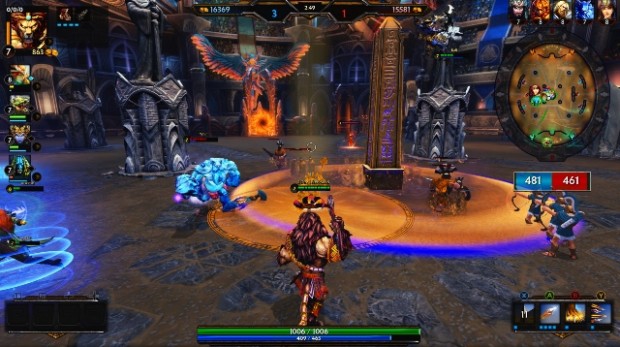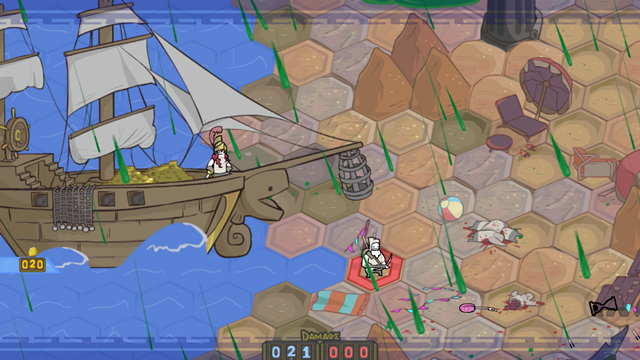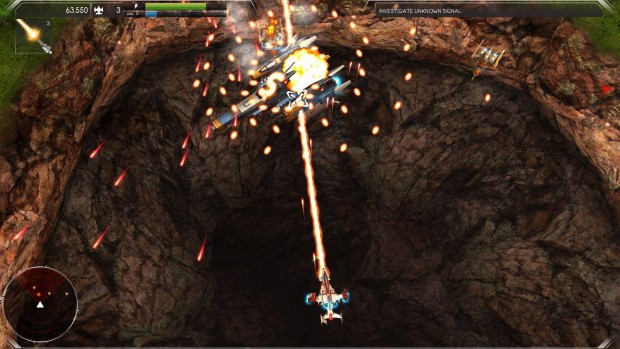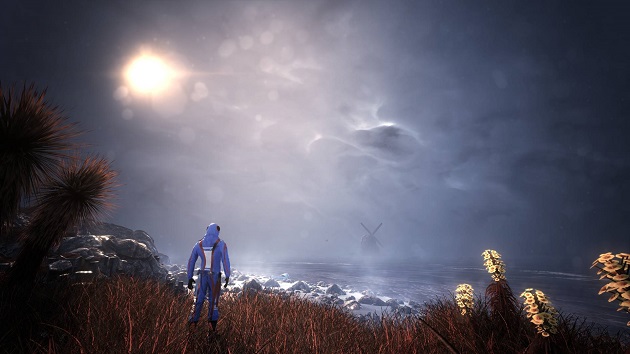 11 years ago
11 years ago
The Solus Project preview: Unreal aspirations
“We want people to look at it and say, ‘OK, that’s something Activision could make,'” Grip Games CEO and co-founder Jakub Mikyska says of The Solus Project following a hands-on session with the game at E3.
It’s a lofty goal, and I’m not entirely sure it’s one the teams at Grip Games and co-developer Teotl Studios are pulling off. But The Solus Project certainly does not appear as an indie game. So while you’re unlikely to mistake it for something with the visual fidelity of Destiny or the next Call of Duty, the Unreal Engine 4-powered game at least looks like it’s slipped into that somewhat barren in-between category. The Solus Project‘s graphics make it look like a AA game. It’s something more technically impressive than what gamers are used to getting at ID@Xbox price points, but you’re unlikely to mistake it for the next Activision blockbuster.
The demo opens with us taking control of an astronaut stranded on a grassy beach with a rocky outcrop to one side and a body of water to the other. Straight forward it is, then. Mikyska tells me that players can pick up things in the environment, so I immediately try to grab every plant I see, but most aren’t pick-ups. Eventually I do come across some plants that can be picked up along with water, health packs, a flashlight and other goodies.
Intelligently managing and holding onto items will be important, since you’ll need resources to prevent dying of exposure, thirst or starvation. Your inventory will of course be limited to prevent stocking up on too many resources to easily overcome the game’s challenges.
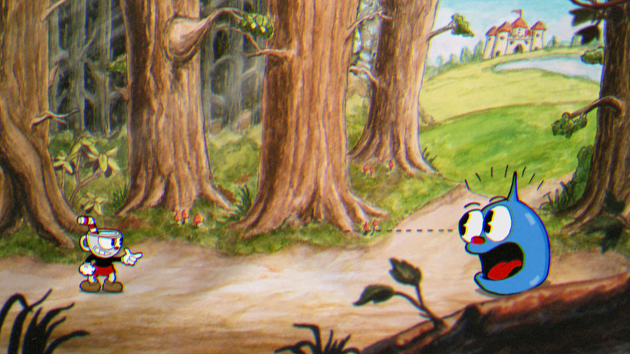 11 years ago
11 years ago
Cuphead preview: Like a boss
In video games, boss fights usually come at the end of levels, acts, chapters, etc. You work your way through a series of smaller challenges, baddies or puzzles to earn the right to face off against a boss and, should you emerge victorious, move on to the next section of the game. That was the custom established decades ago, and it’s largely stuck ever since.
Not so in Cuphead, StudioMDHR’s debut old-time cartoons-inspired shooter. Cuphead has an overworld that you can wander around in and select where to go next, but your what you’re selecting from are boss fights, not levels. Yesterday at E3 XBLA Fans went hands-on with one of those boss fights — and died. Repeatedly. But damn if doing so wasn’t fun.
After selecting what looked like a rocking little music hall on the overworld, I was thrown into a boss fight with a pair of giant frogs with another random player at my side. Hurting the frogs was easy enough: keep holding down the shooting button and take aim at the one frog or the other. The overgrown amphibians soak up tons of fire coming from your characters’ index finger and thumb as they form the shape of a gun and spew forth a barrage of pew, pew, pews.
The bosses, of course, don’t just take this abuse laying down. One shoots ice balls at differing heights, requiring you to alternate between leaping over them and going prone to duck them, while the other spits out flaming bees that you can shoot out of the air. Once you inflict enough damage during this stage of the fight, one of the frogs rolls toward you before going into a new pattern.
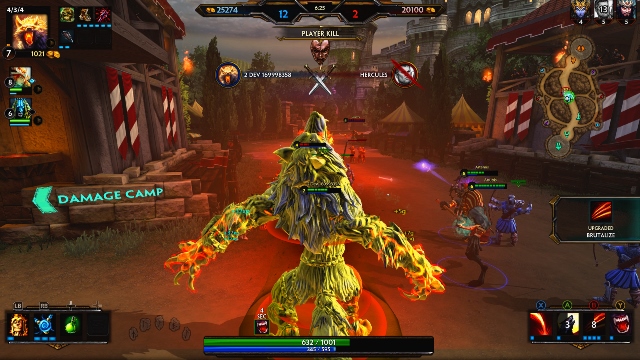 11 years ago
11 years ago
Smite preview part 2: The do’s and don’ts
Days 3-7
Now that I’ve finally unlocked Conquest mode in Smite, I don’t see myself leaving anytime soon, regardless of the other modes that I’m sure I will be unlocked in the near future. Conquest is a tried and true MOBA map, and it feels great running around it from one point to another, and the controls are great and customizable to the point where there’s something for everybody. As a result, everything simply flows together and just work. I was curious how Hi-Rez would solve the problem of not being able to move the camera off the controlled immortal, as can be done in other MOBAs. The studio worked around this by giving all allies and enemies in vision a faint outline with a health bar on the field, making them easy to see. The only crucial thing to take away from what I just said is that everything works how one would expect on a PC, which is all anyone is really asking for.
Anyway, remember how I pretty much only played Ymir in Arena? Well, by day three I had discovered playing Ymir in the support position, and I fell in love with him all over again. The little bit of skill I had built up on Ymir from Arena definitely gave me a leg up over players trying new champions. I’m fortunate to have discovered an immortal that I can thoroughly enjoy so early on. I was setting up kill after kill for the carry, a support’s job, and being able to actively see a player snowball their advantage into something massive is a beautiful sight to behold. But after close to a week of playing Conquest, I’ve begun to notice some trends in most players that are easily fixable and would improve everyone’s play. Granted, some of the following do’s and don’ts apply to more than just Smite, but that doesn’t lessen their value here in the slightest.
 11 years ago
11 years ago
Lovers in a Dangerous Spacetime preview: It’s written in the stars
A good co-op game is hard to come by. Even harder to come by, is one that requires a level of communication so demanding that you feel like you’re actually experiencing a game with the other person instead of just playing your own games side by side.
Asteroid Base’s Lovers in a Dangerous Spacetime is trying to achieve just that, while also trying to complement each player’s gaming style, their strengths and weaknesses.
Inspired by the scene in Star Wars in which Han and Luke are climbing ladders and shooting TIE fighters in the Millennium Falcon, Lovers is a game that demands communication.
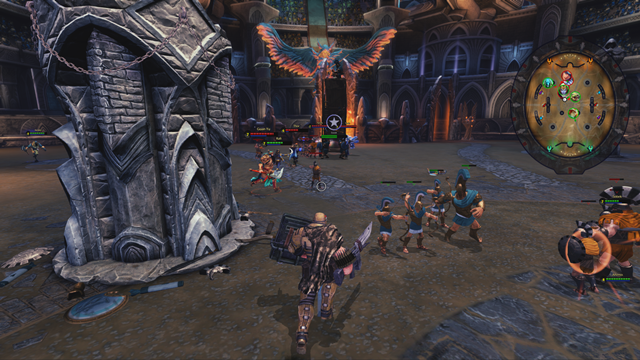 11 years ago
11 years ago
Smite preview part 1: Curious beginnings
Welcome to part one of a multi-part series in which I plan to document my time with Smite to show how I grow as a player in the beta, which should help show new players what to expect. I went into Smite with hundreds of hours of League of Legends logged and even more time spent watching professional matches, plusan occasional dabble in Dota 2. One might think that my modest amount of time spent in the genre might translate over into Smite, but I can say without a doubt, it didn’t give me a leg up over the competition, as evidenced by how poorly my first handful of games went.
Day 1
The game starts with a simple enough tutorial, but, like most MOBAs, it barely even scratches the surface before it sends players on their merry way. The only mode available to players when they first start is called Arena, and that’s where I spent the entirety of my first day.
Arena is shaped like the Colosseum, with jungle camps along the side that provide buffs to players. It’s an excellent place to start, because it avoids the deeper intricacies of a standard match and allows players to focus on finding a god or immortal that fits their play style and novoices to feel good about themselves. Everything seemed to be working well when I first got into a match: the store was easy to navigate; I could decipher what was going on with little problems; and I felt adequately prepared to get started.
Of course I was dead wrong, I finished my first game with a 1/11/11 (kills/deaths/assists) score line as Ares and felt lost. It felt as though I was missing everything, and even though I had these great combos in my head I just couldn’t seem to pull them off. All my skillshots always “just” missed, and I couldn’t seem to land a single auto attack, regardless of if it was melee or ranged. After two more games where I did as bad if not worse than the first, I decided it was time to turn to everyone’s greatest resource: the internet.
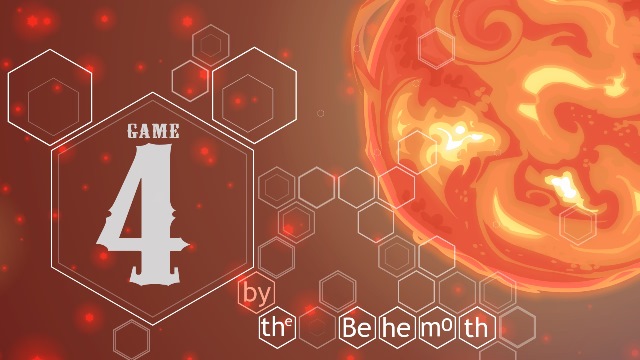 11 years ago
11 years ago
The Behemoth’s Game 4 preview: Flying circus
Like most worlds The Behemoth has created, that of Game 4 is a little outrageous and more than a little deranged. If you know anything at all about the studio’s fourth game, it’s probably that a gargantuan, six-limbed, space-faring bear has slammed into the planet and unleashed all manner of chaos. So comically massive is this Goro-like animal that it’s a wonder anything on the hapless planet it strikes survives the impact. But survive some inhabitants do; after all, it would be more than a bit tricky to build a turn-based strategy game without a plethora of units to conscript and command.
Though the early section of Game 4 on display at PAX East is brief, we see or hear about units as varied as humans, trolls, robots and some sort of living cupcake creatures. Yeah, cupcakes. Playes are given control of Horatio, a simple blueberry farmer and father of one. The extravagantly mustachioed Horatio is forced to take up arms when a band of “Child Eaters” threatening to — what else? — eat his child show up alongside an unseen narrator hurling threats at him. Before you know it, green bear blood pours down from the sky and destroys Horatio’s house, killing his son in the process. It’s as dark as it sounds.
At least, it would be if not for the fact that Game 4 is also utterly goofy. In a repeat performance from his turn in The Behemoth’s BattleBlock Theater, narrator Will Stamper uses his absurd, tangent-filled rants to bring the funnies while also making you question whether or not it’s appropriate to chuckle after witnessing a child being disintegrated by caustic alien bear blood. Of course, this sort of irreverence is nothing new for The Behemoth. Castle Crashers had poop-propelled deer mounts, a literal catfish that coughed up hairball projectiles and princess make-out sessions. Then there was BattleBlock Theater, for which the setup was a group of anthropomorphic cat overlords forcing shipwrecked sailors to perform in a deadly game show. Game 4 is clearly being made from the same mold.
My only means of conveyance
Dan Paladin has served as the main art director for all of The Behemoth’s games, and it shows. But you get the sense that even were Game 4 bereft of Paladin’s bright and charming visuals, you’d still pick up on the connection to the studio’s other games, despite the fact that they are all set in different genres. Production Coordinator Ian Moreno agrees that The Behemoth’s titles all carry a similar tone, but he’s not entirely sure how that happens. Or even whether or not it’s on purpose.
“It’s very much…” he says before pausing a few seconds to search for the answer, “there’s an overall feel and vibe. It’s not just a platformer or a shooter or a turn-based strategy [game]. There’s always more to it, and, yeah, that’s a really tough question. I think it’s just in our DNA, whether it’s the humor and the way we present things, we like to present things very differently.
“When you look at say, how we design our HUD or something, it has to have a little more nuance to it, whether the nuance is just humor or is just offbeat or different.”
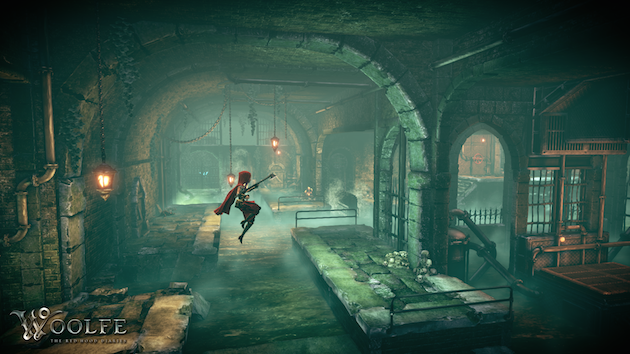 11 years ago
11 years ago
Woolfe: The Red Hood Diaries preview: Yesteryear’s AAA
As retro-inspired two-dimensional indie games have gaga’d critics everywhere, the now-classic three-dimensional games from later generations have been ignored for a decade. Seriously, when was the last time you played a new 3D action-platformer? The people at GRIN Studios were thinking the same thing. So, they made Woolfe: The Red Hood Diaries, a faithful iteration on the forgotten formula.
If you were a fan of Ratchet & Clank, Prince of Persia, Banjo-Kazooie, Crash Bandicoot, or one of the many games like them, you know what I’m talking about. Moving platforms, perfect double jumps, timed switches, labyrinthine puzzles, combat combos, magic attacks… it’s all here. And it has a modern coat of paint, a dramatic story and a beautiful setting to bring it into 2015.
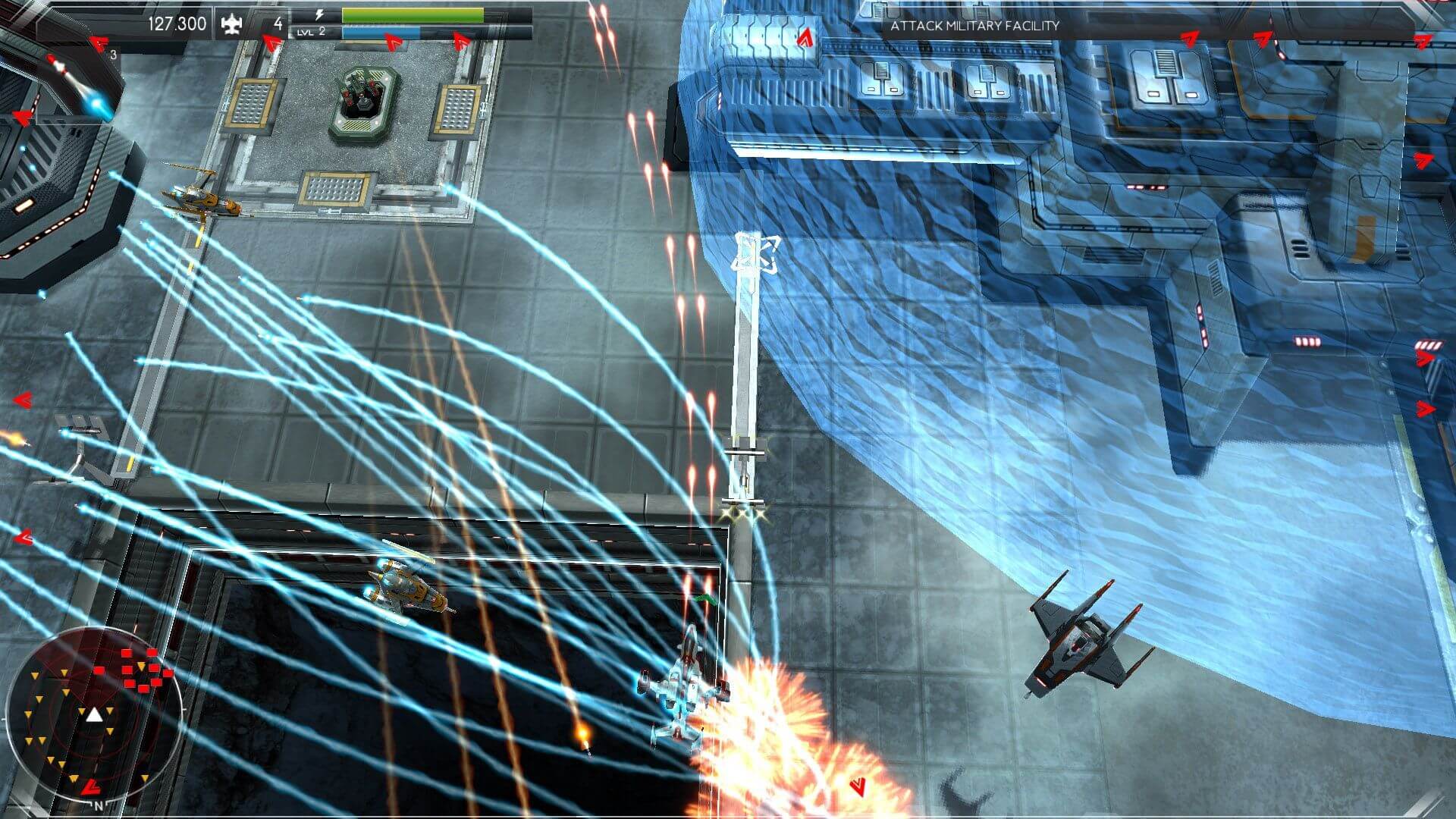 11 years ago
11 years ago
Project Root preview: shoot first
It could be said that time has not been kind to the humble shoot-em-up. Over thirty years ago, games like Space Invaders, Defender, Asteroids and Galaxian were drawing mullet-sporting teens in stonewashed skinny jeans and tight leather jackets to amusement arcades like moths to the glowing neon lights that would hang above the entrance. Today, such arcades are a rarity; mostly replaced by shops or trendy bars and often pulled down entirely, whilst the teenagers of 2015 queue all night outside their local grocery store to buy the latest copy of Call of Duty minutes after its launch.
The shoot-em-up genre has never been keen to go quietly into the night, however, and every generation of consoles has had its fair share of classic static, scrolling and roaming shoot-em-ups for players to consider. I’ve been lucky enough to spend a couple of days with Project Root, an upcoming shooter from Argentinian developer OPQAM that is positioning itself as the definitive next-generation take on this classic genre.
Project Root claims to feature a unique open world aspect in addition to crisp controls, cutting edge graphics, a comprehensive upgrade system and a truly exceptional level of challenge. The game isn’t scheduled for release for a few more weeks, but my experience with it over the past couple of days leads me to suggest that it may yet need a little work to live up to the lofty expectations set by the forebears which it aims to emulate.
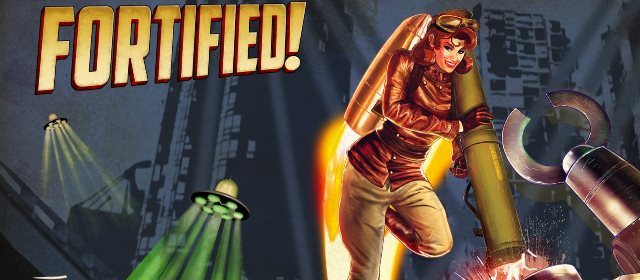 11 years ago
11 years ago
Fortified preview: Soaring above
You’ve no doubt heard the saying “it’s not rocket science” before. Well, when it comes time to choose your class in the new base defense game, Fortified, that saying takes on a very literal meaning. In Clapfoot Games?? new multiplayer game you’re probably going to want to go with the Rocket Scientist.
Set in the 1950s with an urban sci-fi feel, Fortified features four classes; the first of which is the Rocket Scientist. This redheaded little lady was the first character Clapfoot developed, and maybe that’s why she’s arguably the best.
While at PAX East, XBLA Fans had a chance to play Fortified and spoke with Technical Artist, Henrique “HB” Barbieri, who made it very clear that when given my choice of character we should go with the Rocket Scientist. So I did.
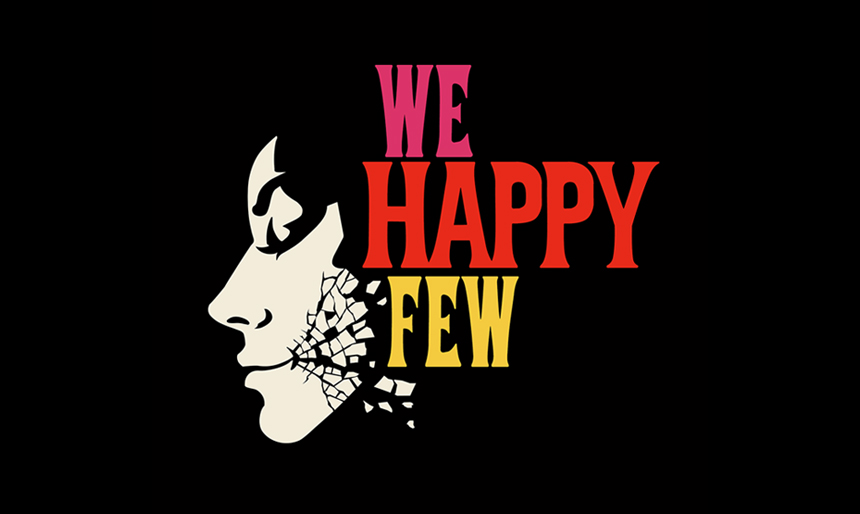 11 years ago
11 years ago
We Happy Few preview: Be happy…or else
The bright white face masks of We Happy Few turned heads on the PAX East show floor this year with their sinister gaze and art style. If you played Contrast, you will immediately recognize Compulsion Games’ handiwork. We Happy Few‘s characters wear a look that says, “Be happy, or else.” And that’s what the game is about.
Creative Director Guillaume Provost explained that We Happy Few explores a dystopian alternate history that takes place 20 years after the Nazis won World War II. How might have Hitler’s ideological fantasies manifested themselves over time? What would daily life be like? What would happen if you tried to resist?
It’s these open questions that the team at Compulsion Games put a lot of thought into. They came up with a world in which the government engineered a utopia where every single person is required to be blissfully happy — no exceptions. To accomplish this, the government keeps everybody drugged so that they will never need to worry about anything at all, not even worry itself. Everybody must be happy, and everybody must conform.



